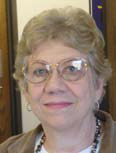Where are you in your interest in genealogy? Perhaps taking a DNA test has sparked your interest. To be successful in understanding the results of your DNA test, you need to create a family tree to submit with your test – or after you receive the results.
This is important because when we’re searching for cousins from the millions who have also submitted their DNA sample, you must have a family tree for them to search. Likewise, you will search the family trees of those people who submit their family trees. Without this information, you will certainly know that you are biologically related to those hundreds or thousands of cousins but you will not be able to find out how you are related.
To overcome that barrier of missing family trees, I have recently taken my report of cousins, selected one, and then had the AncestryDNA report list shared matches. The result was a list of 10 to 20 links of people who are related to me through a specific branch of my family. I can then sort them by who they are related to – and therefore how they are related to me.
Then comes the problem of contacting those matches. You can send a person a message – perhaps asking them to post a family tree – but that message goes directly to Ancestry. If the person is no longer subscribing to Ancestry, the message will not go to that person.
If you have recently submitted your test or recently received results, promise yourself to set aside a few hours to really study your list of cousins, open those family trees that have been provided, and make lists of your shared matches. That way you can benefit from the investment you made in DNA testing and learn more about your family tree.
~ Carol Cooke Darrow is teaching a free Beginning Genealogy at the downtown Denver Public Library on the second Saturday of each month from 10 am – noon.

